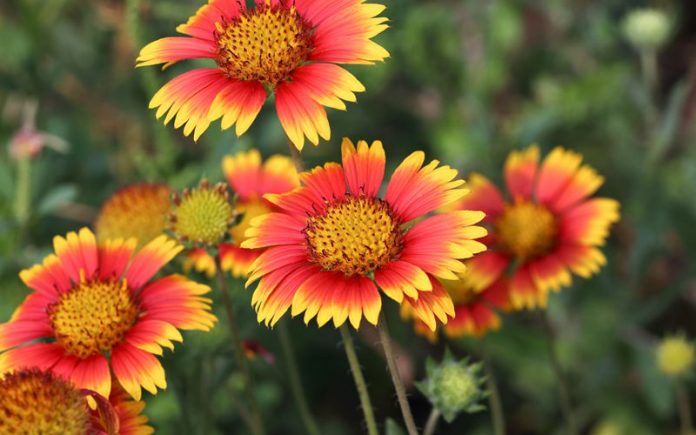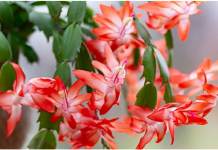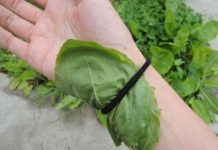If you are a busy homeowner who still wants a beautiful flowering landscape in an arid location, you may be looking for plants that can thrive in hot, dry conditions. What should you plant that will save water, money, time and resources? Some of these questions are answered in this list of plants that perform beautifully in drought conditions:
Here’s a list of 10 heat-tolerant perennials that do beautifully in hot, dry summer conditions:
- Try the moisture-retaining foliage of sage.

Salvia Argentea (silver sage) is a water-saving plant with woolly foliage that conspires to retain moisture on the leaf surface. It is drought tolerant and can grow up to 30 cm high and twice as wide. Use it in your borders, flower beds and containers. This low-maintenance biennial will fit into your busy schedule and is avoided by marauding deer and rabbits.
- Establish a drought-tolerant garden with the cover flower

This daisy-like flower is at home in a warm, dry grassland landscape. It is a herbaceous perennial that prefers warm, dry meadows, woods and roadsides; therefore, its adaptability makes it a popular ornamental wildflower for naturalizing meadows.
Neglect is not a problem as it blooms throughout the summer and autumn, and the rough texture of its stems and leaves makes it unattractive to deer. If there’s room in your garden for bright carnival shades of red and yellow flowers, this three-foot charmer will make your house a home.
- Naturalise yarrow to create a habitat for wildlife

Yarrow is a perennial herb that returns every year once it is established. Its hairy, fern-like leaves are aromatic and its flowers appear in shades of white, yellow and tinted pink. They thrive in well-drained soil and recover easily from extreme drought. If your soil is poor in nutrients, this may be the green for you.
- Grow heat-tolerant Heuchera

You may know this plant as coral bells or alum root. Because it can grow on rocky ledges with little soil, it could be called a survivor. It can often recover from drought, heat and deer damage. Grow it in a rock garden under the famous black walnut tree and it ignores the negative allelopathic effects of that tree. It is a plant to keep.
- Grow Hosta in dry conditions

Hosta is a broad-leaved plant that is popular in many landscapes. It is for the busy homeowner who has little time for maintenance. Once it has established itself in your new garden environment, you can relax and watch it grow beautifully. Although it likes shady areas, it can adapt to sunny gardens and thrive.
- Grow lemon balm in your cottage garden

Plant this one near the garden gate, and watch it flourish with very little water. It can withstand the heat and stay tall. The old feathery scarlet flowers of Cambridge are a favourite of this fragrant perennial which can grow up to a metre high. Long, hot summers will only see this multiple plant in waves of colour. Hummingbirds and butterflies are attracted to the long-tubed flowers. This is a good thing.
7-Incorporate daylilies into your landscape

Daylilies are durable, hardy and almost trouble-free. Their beauty is not affected by summer heat or drought. The tuberous roots are fleshy and produce sabre-shaped leaves that add to the decor of your garden. Large flowering clumps develop in a few seasons. They grow and perform well in almost any soil. If you are a careless grower, this one will suit you.
- Growing a low-maintenance gerbera daisy

Transvaal daisy is another name for this drought tolerant plant that can grow up to 30 cm high. It is native to South Africa and likes to grow in sandy soil and poor dry areas. The large, bird-attracting flowers can last for six weeks. If you want cut flowers available in many deep colours, grow Gerbera daisies.
- Grow purple cone-shaped flowers

The coneflower is a hardy perennial that is not bothered by the summer heat. It is a coarse, stiff plant with bristly foliage that can grow up to 1.5 m high. It is a good cut flower and will continue to flower until frost if the spent flowers are removed. Finches are attracted to the spiky seed pods that cling to the plants in winter.
- Propagating acanthus despite dry summers

Acanthus or Bear’s Breech does well in poor, dry soil with minimal water. The roots conserve water by penetrating deep to reach moisture. Acanthus is a hardy perennial that can be recognised by its glossy foliage. The white or pink spires grow up to 2.5 metres high and flower during the spring and summer months. If you want a garden that invites bees and butterflies, this is the one for you.










